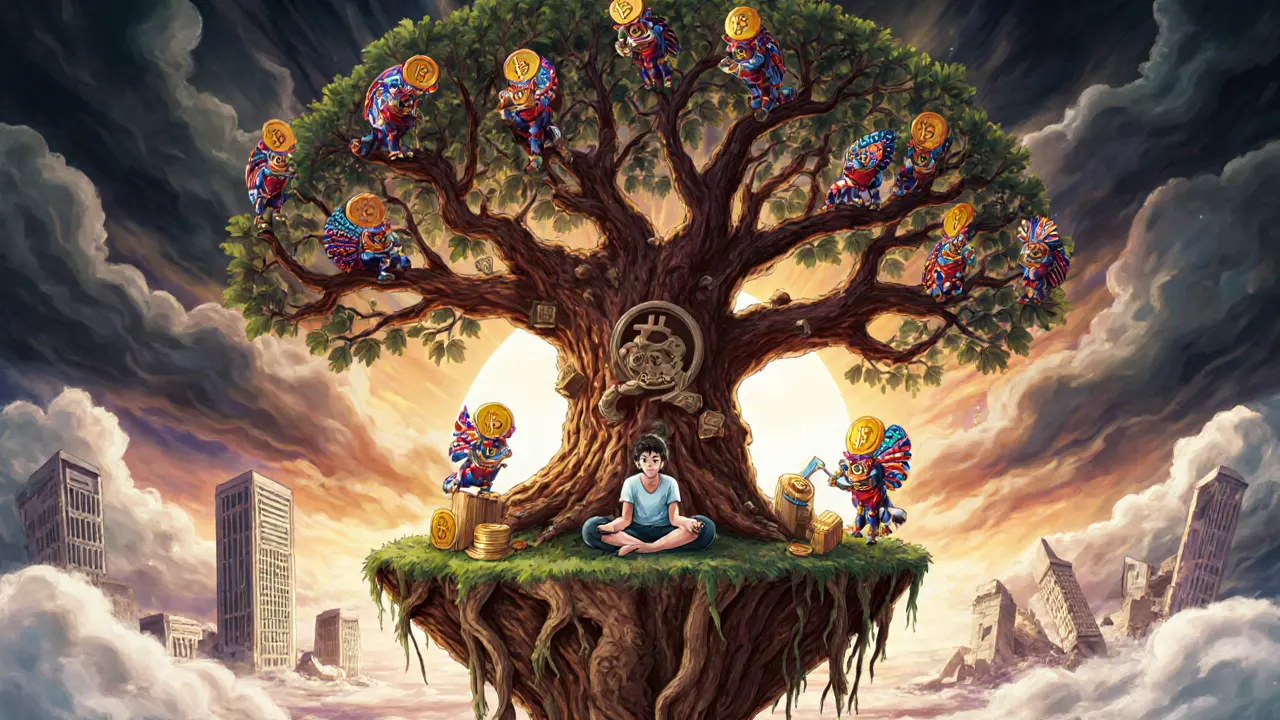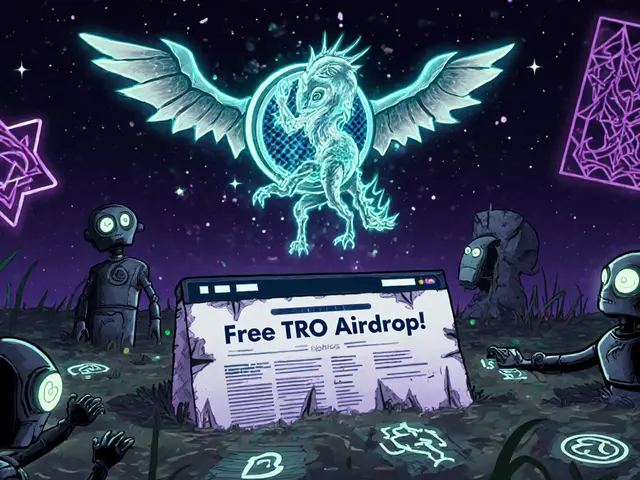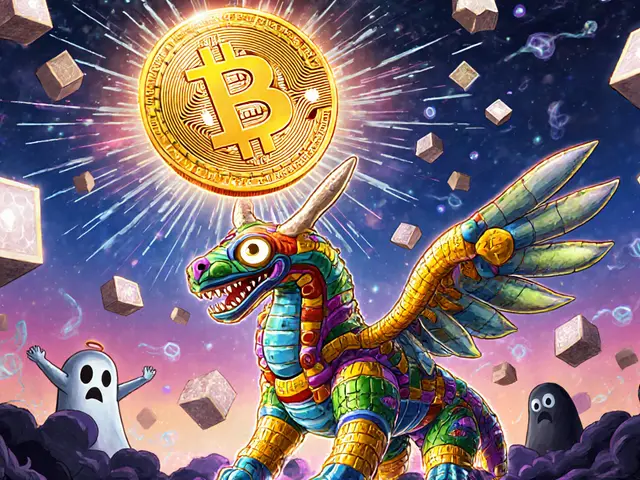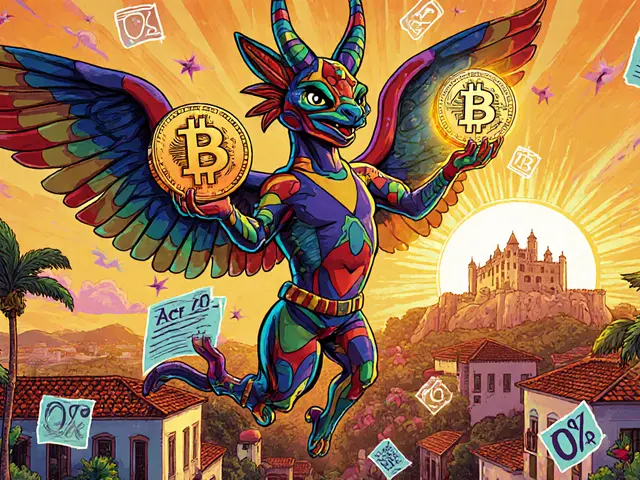Node Requirement Calculator
Node Requirements Calculator
Determine if your device meets the minimum requirements to run a cryptocurrency full node. This tool helps you understand whether your hardware can support the blockchain network.
Node Requirements Analysis
Enter your device specifications to see if it meets minimum requirements for running a full node.
Current Network Health: As of October 2023, Bitcoin has approximately 14,000 publicly reachable full nodes. Each node contributes to the network's security and resilience. The more nodes running, the more decentralized and secure the network becomes.
What Exactly Is a P2P Network?
A peer-to-peer (P2P) network is just a group of computers talking directly to each other-no middleman needed. Think of it like sharing music files back in the early 2000s: you download from someone else’s hard drive, and they download from yours. No central server controls it. That’s the same idea behind Bitcoin and other cryptocurrencies. Every device connected to the network, called a node, a computer running cryptocurrency software that validates transactions and stores a copy of the blockchain, acts as both a client and a server. It asks for data, and it gives data. No bank, no government, no company runs the show.
Why P2P Is the Backbone of Cryptocurrency
Before Bitcoin, money moved through banks, payment processors, clearinghouses-all centralized systems. If one of them failed, everything slowed down or stopped. Bitcoin’s creator, Satoshi Nakamoto, flipped that model. In the 2008 whitepaper, he called it a "Peer-to-Peer Electronic Cash System." That wasn’t just a buzzword. It was the entire design. The P2P network is what makes cryptocurrency trustless. You don’t need to trust a company or a person. You trust the math, the code, and the network of strangers keeping everything honest.
Here’s how it works: when you send Bitcoin to a friend, your transaction gets broadcast to every node on the network. Each node checks if you actually own the coins you’re trying to spend. It looks at the blockchain history-every past transaction ever made-to make sure you’re not double-spending. If it passes, the transaction waits in a pool until miners or validators (depending on the coin) bundle it into a block. Then that block gets sent out again, node to node, until every copy of the blockchain across the globe updates.
How Nodes Keep the Network Alive
Not all nodes are the same. There are full nodes, computers that store the entire blockchain and enforce all consensus rules independently, and there are lightweight nodes, like mobile wallets, that only check a portion of the data. Full nodes are the real backbone. As of October 2023, Bitcoin had around 14,000 publicly reachable full nodes. Each one holds a complete copy of the blockchain-over 500 GB of data and growing by about 144 MB every day.
Running a full node isn’t hard, but it’s not casual either. You need:
- A computer with at least 2GB of RAM
- At least 50GB of free storage (and you’ll need more every month)
- A stable internet connection (10 Mbps upload is recommended)
- Time to sync-initial download can take 2 to 3 days
Most people don’t run full nodes because it’s a hassle. But those who do aren’t just using Bitcoin-they’re defending it. Every full node is a checkpoint. If someone tries to sneak in a fake transaction, the network rejects it because 14,000 other nodes already know the truth.
How It Compares to Traditional Banking Systems
Visa processes up to 65,000 transactions per second. Bitcoin? Around 7. That’s not a bug-it’s a trade-off. Centralized systems are fast because they’re controlled by a few powerful servers. But they’re also fragile. If Visa’s main data center goes down, payments stall. If a bank gets hacked, millions of accounts are at risk.
P2P networks sacrifice speed for resilience. In 2020, when Twitter’s API went down, centralized crypto exchanges like Coinbase and Binance lost connectivity. Users couldn’t withdraw. But Bitcoin’s P2P network? Still running. Nodes kept broadcasting transactions. People could still send and receive Bitcoin even when the exchanges were down.
Here’s a quick comparison:
| Feature | P2P Cryptocurrency Network (e.g., Bitcoin) | Centralized System (e.g., Visa) |
|---|---|---|
| Transaction Speed | 4-7 per second | Up to 65,000 per second |
| Uptime | 99.9%+ (no single point of failure) | 99.9%+ (but vulnerable to outages) |
| Control | Distributed across thousands of nodes | Controlled by a few corporations |
| Censorship Resistance | Very high-no one can block a transaction | Low-banks can freeze accounts |
| Cost to Run | Users pay for bandwidth and storage | Costs absorbed by the company |

The Hidden Costs of Decentralization
There’s a problem no one talks about enough: running a node costs money. Bandwidth, electricity, storage-it all adds up. And nobody pays you for it. That’s called the "tragedy of the commons." Everyone benefits from the network, but few are willing to bear the cost.
Between 2017 and 2020, Bitcoin’s public full nodes dropped from 12,000 to 5,000. People gave up. They used lightweight wallets instead. The network survived, but it got weaker. Thankfully, interest has rebounded. By 2023, full nodes climbed back to 14,000. Why? Because more people understand that if you want real ownership of your money, you need to run your own node.
There’s also the issue of scalability. Bitcoin’s P2P network was never meant to handle global payments at Visa speed. That’s why the Lightning Network, a second-layer P2P payment protocol built on top of Bitcoin that enables near-instant, low-cost transactions exists. It’s still peer-to-peer, but transactions happen off-chain, then get settled on the main blockchain. As of October 2023, Lightning processes over $1.2 billion in monthly volume across 18,000 nodes.
Real People, Real Experiences
On Reddit, a user named u/NodeRunner89 wrote: "Syncing took 72 hours on my 1Gbps connection. But now I feel like I’m part of the network’s security." That’s the sentiment you hear again and again from people who run full nodes. It’s not about profit. It’s about autonomy.
But not everyone has a smooth ride. On Bitcoin Stack Exchange, someone complained their transaction took 72 hours to confirm during a fee spike. That’s a real downside. When the network gets busy, miners prioritize transactions with higher fees. If you’re not willing to pay, you wait. That’s not a flaw-it’s a market mechanism. But it’s frustrating for everyday users.
Trustpilot reviews of blockchain explorers show 68% of users love the transparency: "I saw my transaction move across the globe in real time." But 29% said it was too technical: "I needed three YouTube tutorials just to get my node working." The barrier to entry is still high for non-tech people.
What’s Changing Right Now
The biggest shift happened in 2022 when Ethereum switched from proof-of-work to proof-of-stake. That cut its energy use by 99.95%. Suddenly, running a node became much cheaper. Ethereum’s node count stayed strong-around 8,000 full nodes-because the cost to participate dropped.
Bitcoin isn’t standing still either. The Taproot upgrade in 2021 made transaction relay 25% more efficient. Researchers are working on Erlay, a protocol that could reduce bandwidth use by 80%. And the IETF is drafting a standard for blockchain P2P transport-something that could make it easier for different networks to talk to each other.
Meanwhile, new chains like Solana use hybrid models. They keep some P2P elements but rely on centralized validators to boost speed. Critics say that’s not "real" decentralization. Supporters say it’s practical. The debate continues.

Will P2P Networks Survive?
Some experts, like economist Nouriel Roubini, call P2P networks "inefficient by design." He’s right that they’re slow and energy-heavy-but he misses the point. Cryptocurrency isn’t trying to beat Visa. It’s trying to replace banks. And banks have been broken for decades.
Look at global remittances. The World Bank says people sent $640 billion in 2022, paying an average fee of 6.15%. With P2P crypto, you can send money across borders for less than 1%. That’s life-changing for someone sending money home to family.
Enterprise adoption is growing too. Banks like Santander and Westpac use P2P blockchain networks for cross-border payments with 99.98% uptime. The EU’s MiCA regulation, effective in late 2024, officially recognizes P2P network operators as regulated service providers. That’s a big deal. It means governments are starting to accept this as real infrastructure.
Will quantum computers break it? Maybe. NIST says current encryption could be vulnerable by 2035. But researchers are already working on post-quantum cryptography. The network will adapt. That’s the beauty of P2P: no one person controls it, so no one person can stop it from evolving.
What You Can Do Today
If you want to understand cryptocurrency, don’t just buy it. Run a node. It’s the only way to truly see how the system works. You don’t need a supercomputer. A Raspberry Pi 4 with a 1TB external drive and a good internet connection will do. Install Bitcoin Core, let it sync, and watch the blocks come in.
You’re not just using Bitcoin. You’re helping to keep it alive. And that’s more powerful than any wallet or exchange ever could be.
Do I need to run a full node to use cryptocurrency?
No, you don’t need to run a full node to use Bitcoin or Ethereum. Most people use lightweight wallets like Exodus, Trust Wallet, or Coinbase Wallet. These apps connect to public nodes run by others. But if you want full control, privacy, and to help secure the network, running your own node is the best option.
Can P2P networks be shut down?
Not easily. Since there’s no central server, you can’t just turn it off. Even if governments block access in one country, nodes in other countries keep the network alive. Bitcoin has operated through wars, sanctions, and internet blackouts. The only way to stop it would be to cut off every single device connected to it-which is impossible.
Why do some cryptocurrencies use centralized servers?
Some coins, like Solana or Ripple, use centralized validators to speed up transactions and reduce costs. This makes them more practical for banks and businesses but sacrifices decentralization. They’re faster, but they’re also more vulnerable to censorship and control. Bitcoin and Ethereum remain the most decentralized because they rely almost entirely on P2P networks.
Is running a node profitable?
Not directly. Running a Bitcoin full node doesn’t pay you. You don’t earn coins. But you gain something more valuable: independence. You don’t have to trust anyone else. You verify everything yourself. For many, that’s worth the cost of electricity and storage.
How secure is a P2P network?
Extremely secure-when it’s large enough. Bitcoin’s network is so distributed that it would take an attacker controlling over 51% of all mining power to alter the blockchain. That’s nearly impossible. Smaller networks, like newer altcoins, are more vulnerable. The bigger the network, the harder it is to attack.
What happens if my node goes offline?
Nothing major. The network keeps going. Your node just stops helping to broadcast transactions and verify blocks. When you turn it back on, it syncs with the latest blockchain data automatically. You don’t lose anything. You just miss out on contributing until you’re back online.
Final Thought: It’s Not About Tech-It’s About Control
P2P networks aren’t just a technical innovation. They’re a political one. They shift power away from banks, governments, and corporations-and put it back in the hands of individuals. You don’t need permission to use Bitcoin. You don’t need approval to run a node. That’s revolutionary. And it’s why, despite the speed limits, the complexity, and the cost, P2P networks are here to stay.











12 Comments
I run a full node on a Raspberry Pi. Took 5 days to sync but now I feel like I'm actually part of the system. No middlemen. No banks telling me what I can do with my money. This is what freedom looks like.
theyre lying about nodes being secure the government already has backdoors in the code you think theyd let this fly without controlling it somehow
Oh wow another cultist worshipping a digital ledger. Let me guess next you'll tell me the blockchain is sacred and miners are modern-day monks. Wake up. This is just another pyramid scheme dressed up with buzzwords and bad math.
I appreciate the effort but honestly running a node feels like volunteering to be the IT guy for a group that doesn't pay you. I'll stick with my wallet and let someone else deal with the bandwidth bill.
The real question isn't whether P2P works. It's whether we're willing to pay the price for autonomy. Speed convenience control. Pick two. We chose autonomy. That's not a bug. That's the whole point.
If you think this is hard wait till you try to explain it to your grandma. But once she gets it? She'll send her pension in BTC and laugh at the bank teller. This is the future and it's not coming it's already here
72 hours to sync and you call that freedom? I spent 3 days downloading cat memes and got more value out of it
I just started my node last week and honestly it's been a game changer. I used to stress about exchange hacks now I just watch the blocks roll in like a calm ocean. You don't need to be a genius just patient and curious
If you're reading this and thinking 'I can't do this' you already are. You're here learning. That's the first step. The rest? Just time and a little electricity. You got this.
While I appreciate the technical exposition I must note that the sociopolitical implications of distributed ledger architecture represent a paradigmatic shift in the ontology of value exchange. The erosion of intermediary hegemony is not merely economic but epistemological.
Oh please. You think running a node makes you some kind of digital rebel? You're just a guy with a hard drive. Real power is in the hands of the miners and the ASIC manufacturers. You're just a glorified relay station.
I think the real win here is that even people who don't run nodes still benefit from the network's resilience. When exchanges went down in 2020 I still sent BTC through my phone. No drama. No waiting. Just worked. That's the quiet power of decentralization.